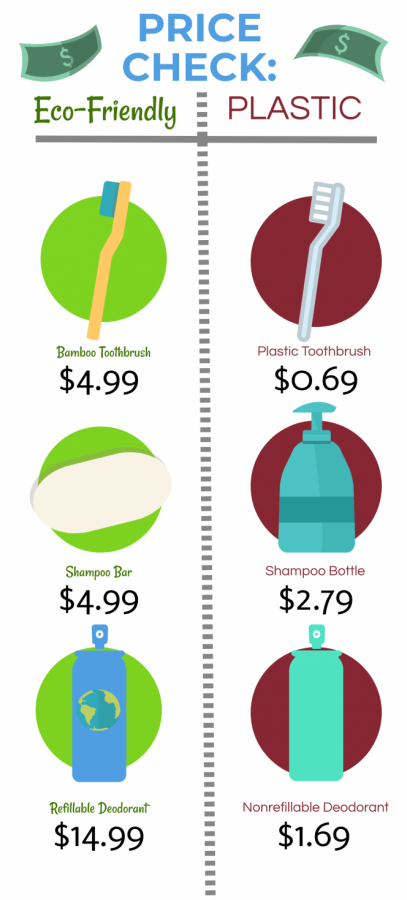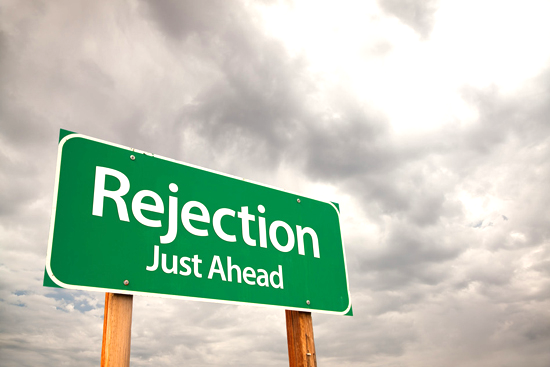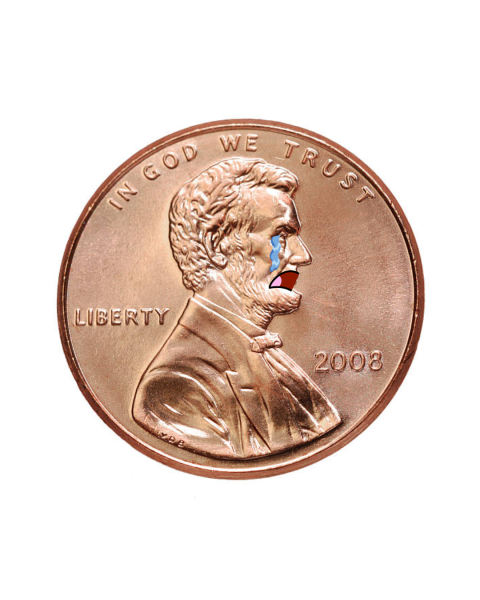Investing in our Future: Subsidizing Sustainable Products
Prices of sustainable vs. non-sustainable items at Target.
To be frank: the world is burning, and we are awful firefighters. We’ve failed to invest in the future and so the future has failed to invest in us.
It’s not that we don’t know how to act more sustainably. We know which technologies and processes are more sustainable, like solar energy and low-flush toilets.
The problem, then, lies here: these technologies are not accessible. While these technologies may be better for your wallet in the long run, they’re pricey to buy and install. People just can’t afford it.
Commercial businesses, too, use cheaper, polluting products, like plastic. It keeps costs down for essential goods like shampoo, conditioner, toothpaste and deodorant— which are necessities for everyone. While the wealthier few can afford plastic-free shampoo bars, toothpaste tablets and reusable deodorant containers, the rest of us are stuck with pollutants.
In my favorite version of society, we’ve already put money toward researching how to make sustainable products for cheap, and the middle and lower classes don’t need to feel guilty for purchasing basic necessities. But until I wake up in this magical dreamland, the best next step at a time when we need drastic action is to subsidize these products until research in development and infrastructure brings down the cost.
When we think of subsidies, we often think of agriculture. But these subsidies, too, came from a time of crisis. Europe was devastated by World War II, and its export market was too— which meant there were no food imports for the U.S., and millions of citizens to feed. So the federal government passed legislation to subsidize corn, ensuring a well-fed population.
Eighty years later, we face an environmental crisis beyond comparison. But we can still look to, and learn from the past. In my magical dreamland society, we care more about climate change than we care about profit. But since I live in this one— a capitalist society that values profit above all else, including environmental well-being— then environmental solutions have to be profit-based.
Subsidies that make eco-friendly items cheaper than harmful ones, then, are the solution. Things like hemp paper, plastic-free shampoo bars and eco-friendly reusable deodorants will be accessible to the public because of lowered cost from these subsidies.
More importantly, subsidies would lower environmental costs by shifting industry focus from lumber and plastic to more sustainable products. Besides, more trees means less carbon in the atmosphere, which solves our pollution problem as well as our carbon emission problem.
if we invest money into the infrastructure that produces these eco-friendly products, and make production processes more efficient and less expensive, the cost of production will lower all on its own— and so will the price on the sale tag.
To some, subsidizing these products on such a large scale may sound like a drastic action. That’s because it is. In my dreamland society, we slowly shift to more sustainable products, but we don’t have that sort of time. If we don’t take quick and drastic action to make essential products more eco-friendly, our planet will become more and more inhabitable.
And that’s a price no one can afford.




